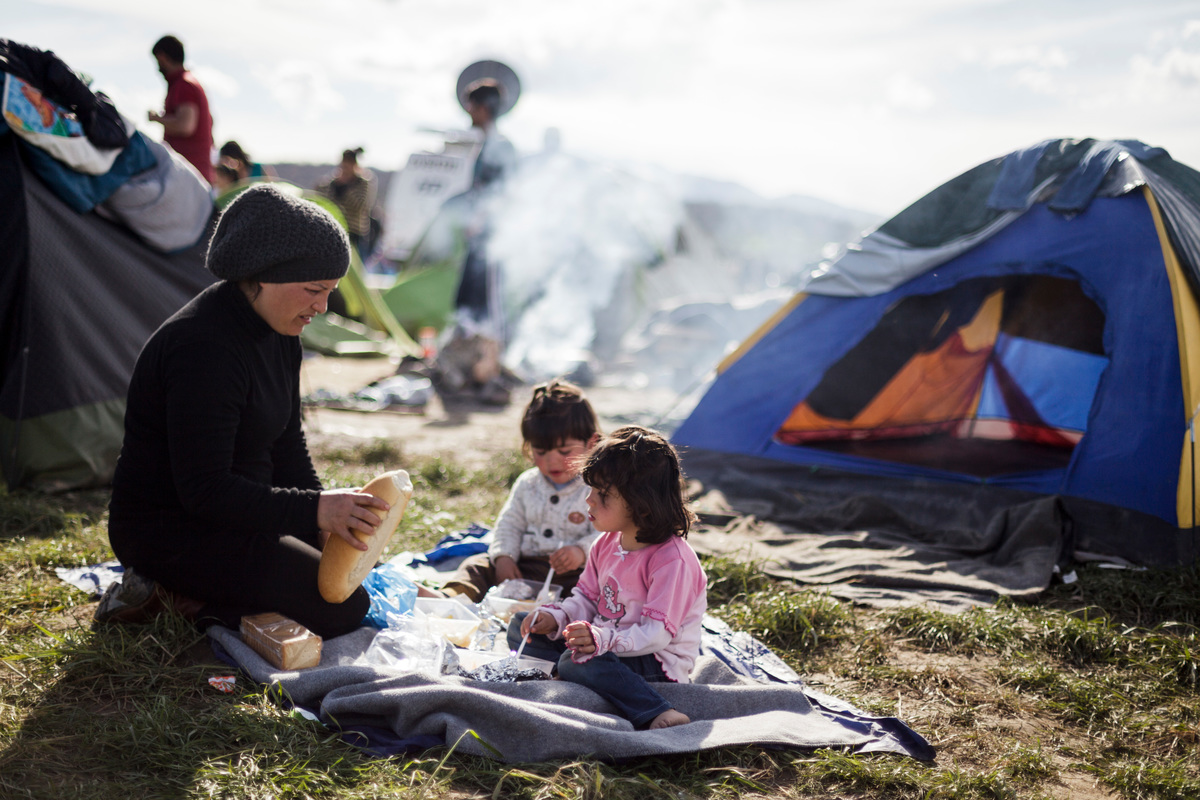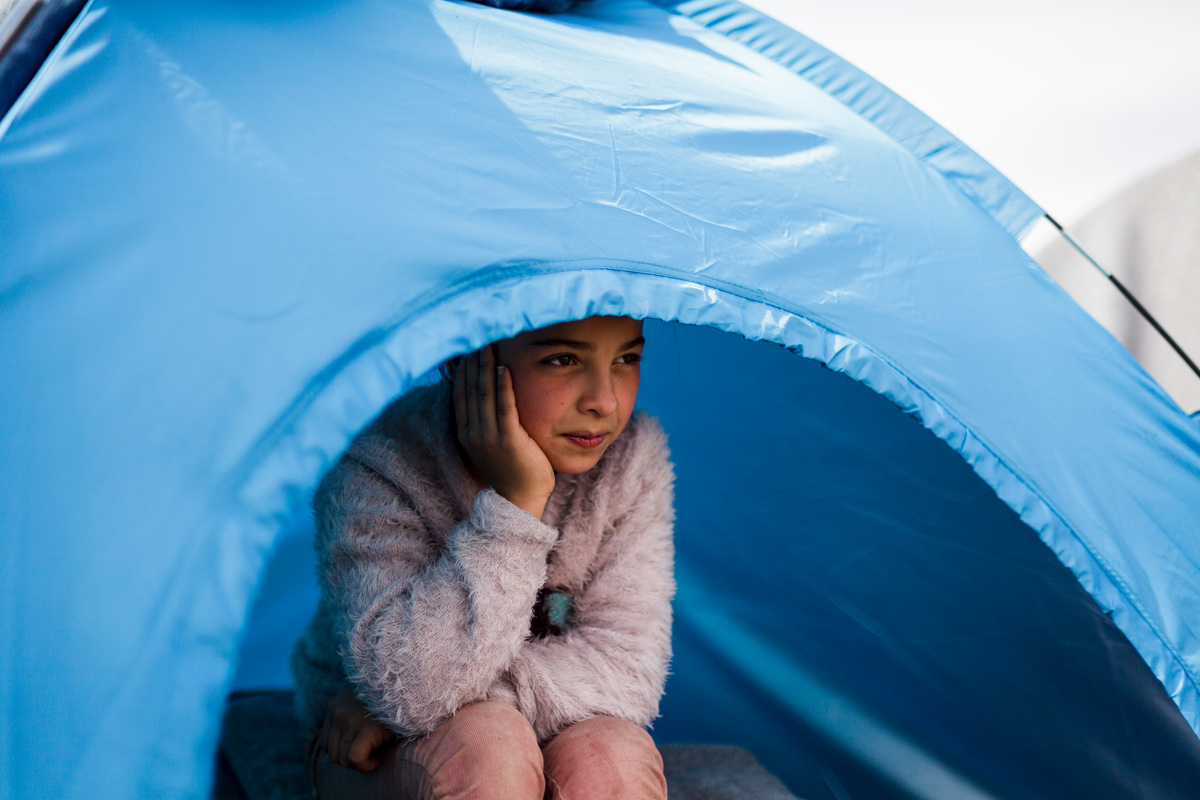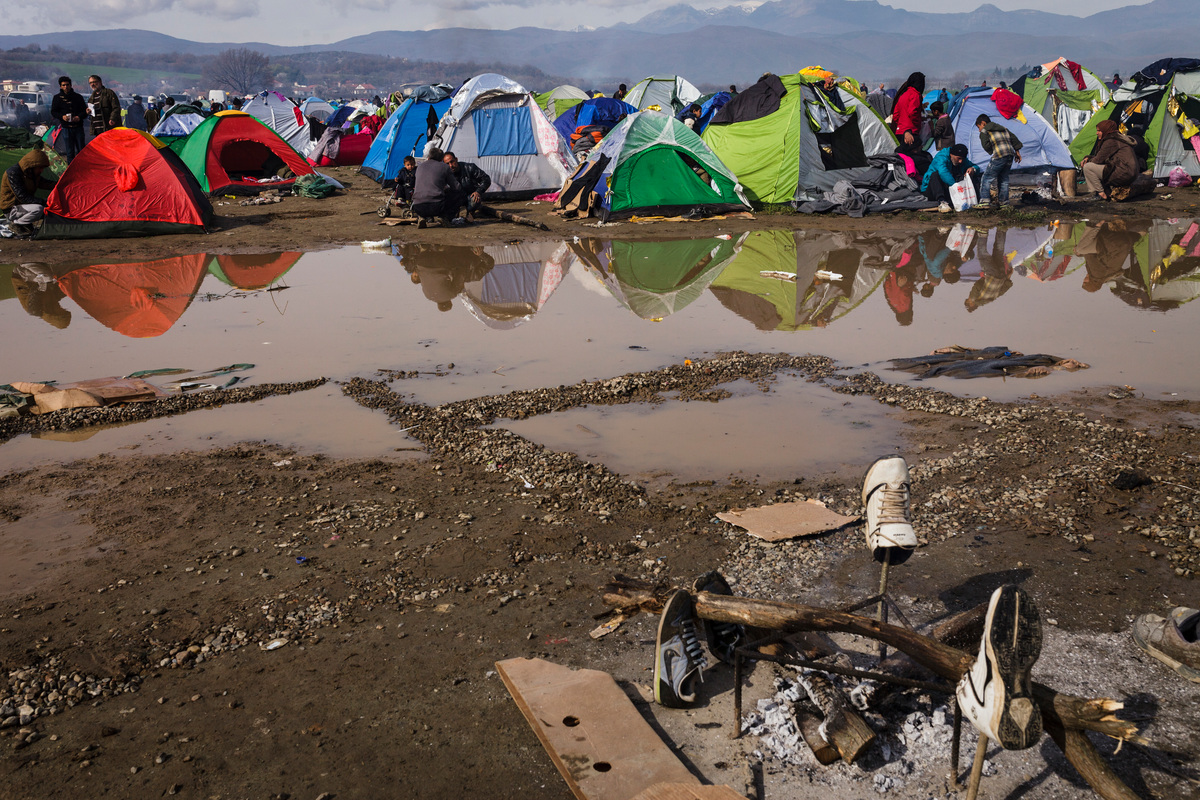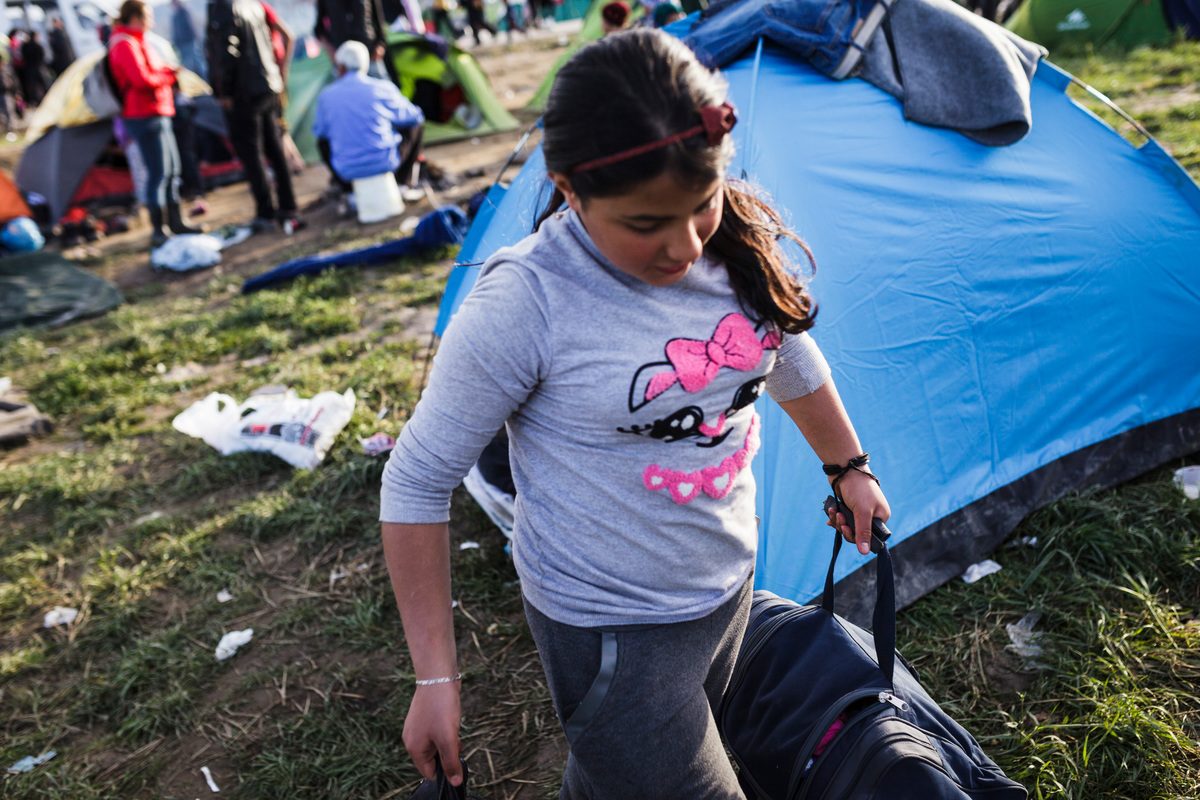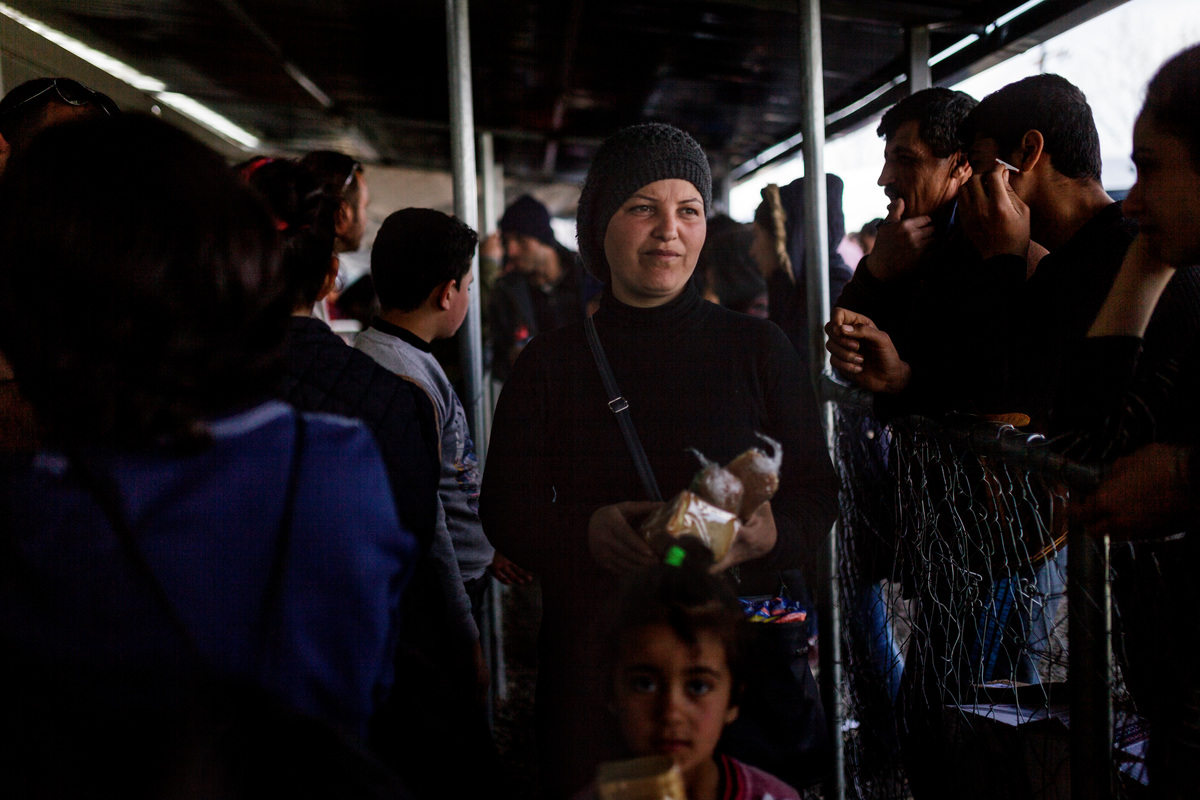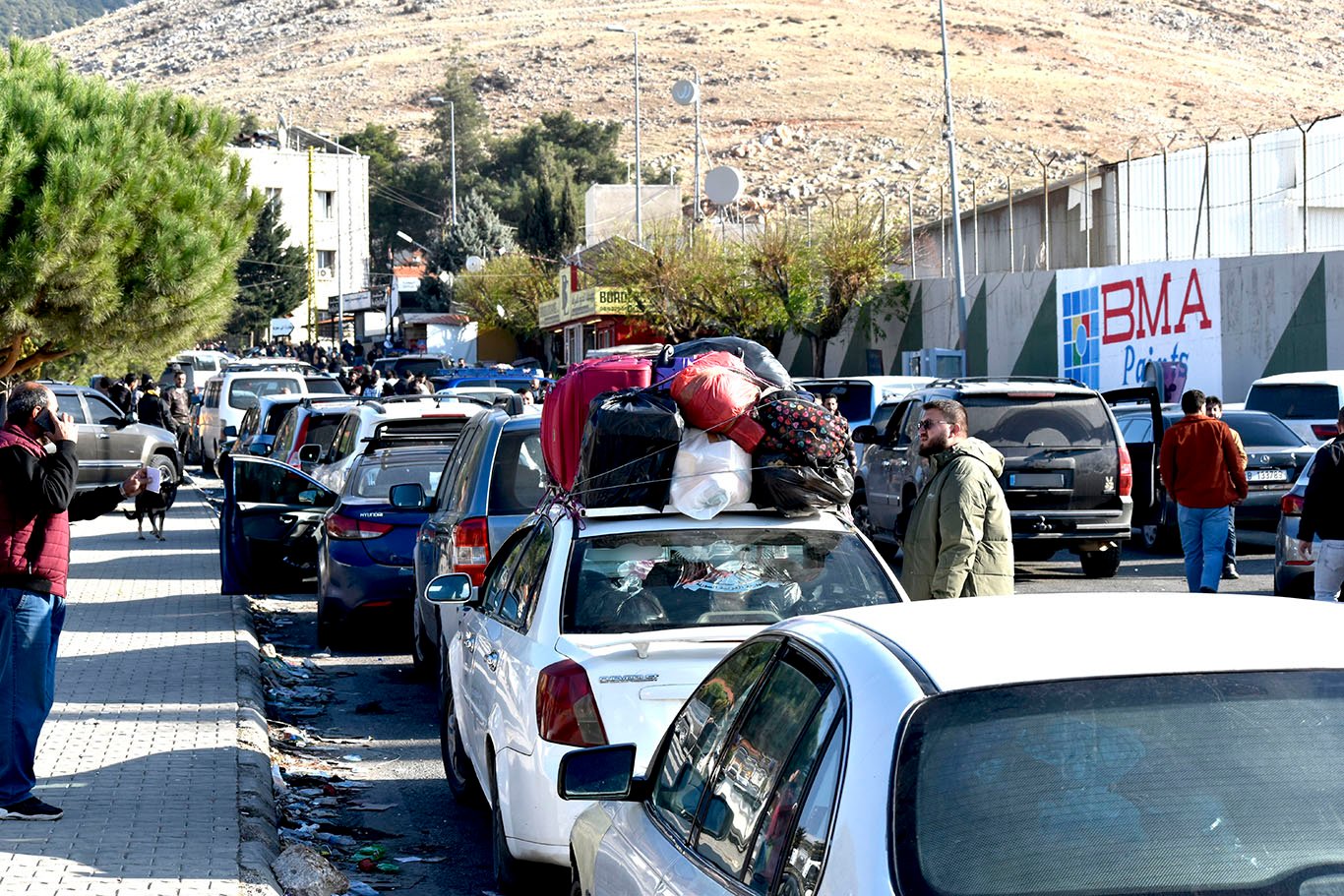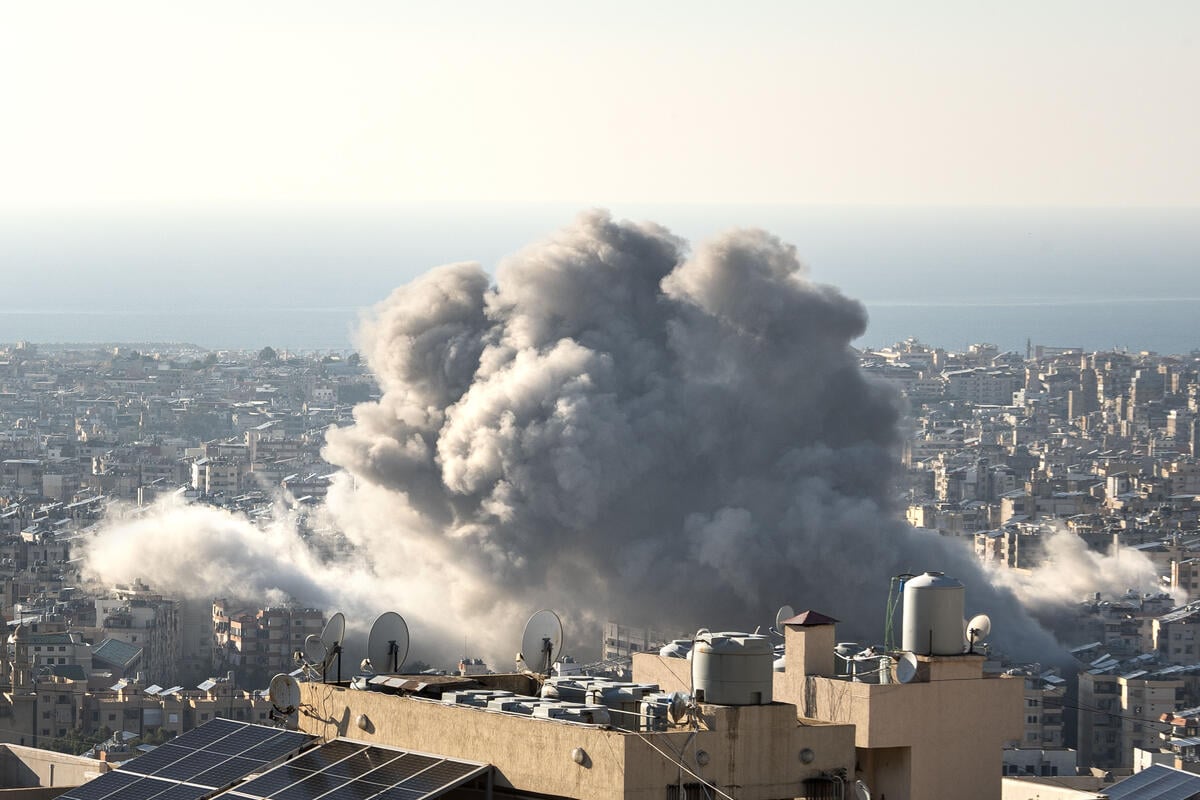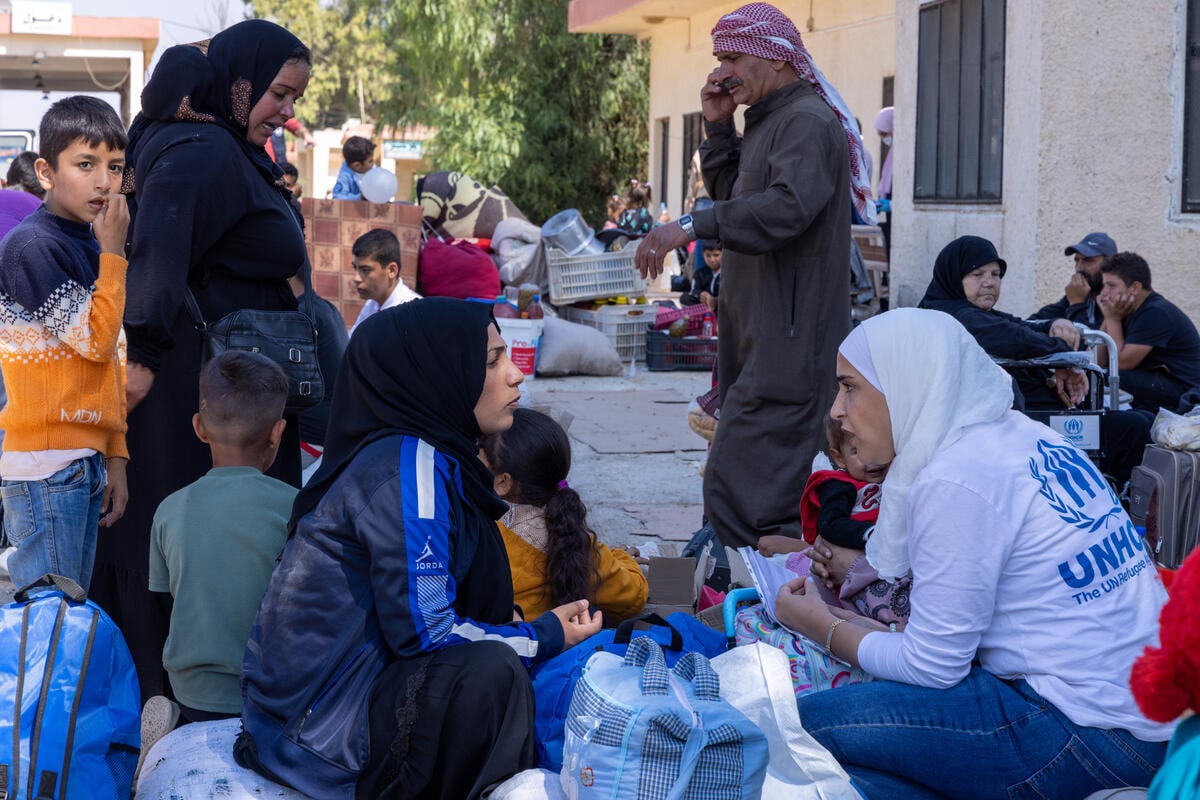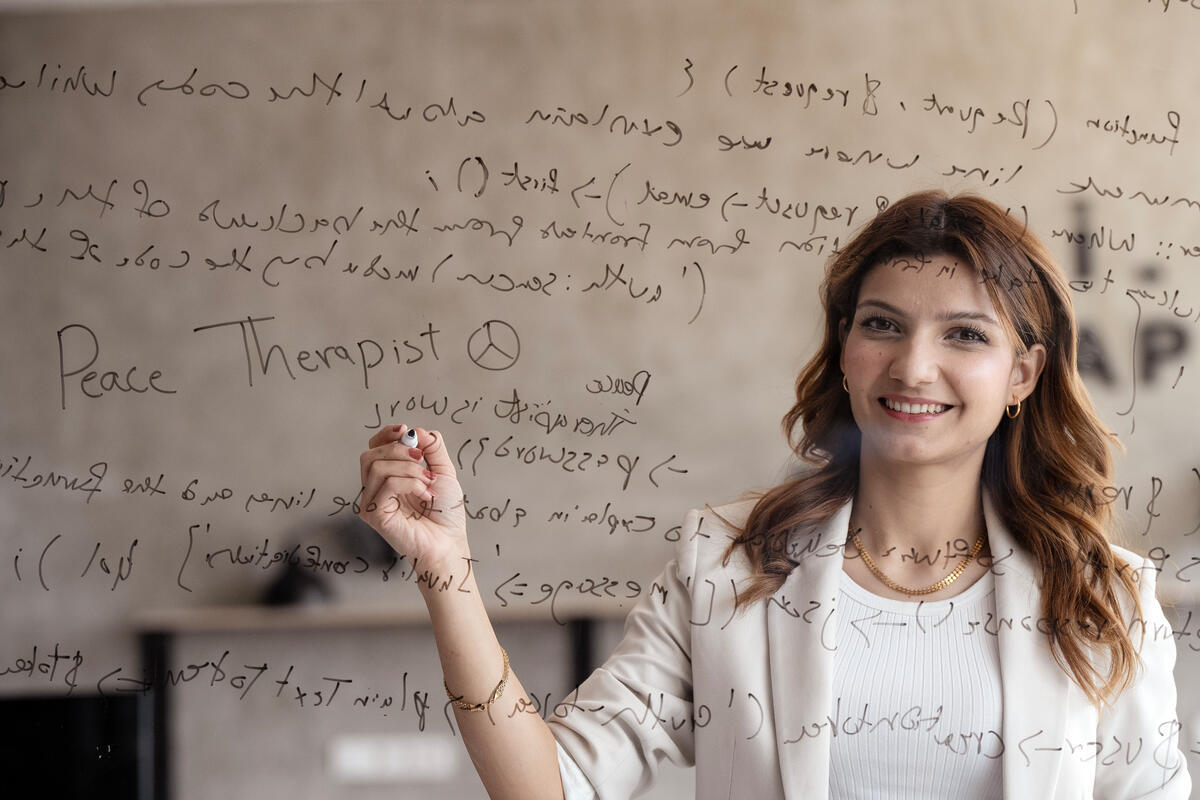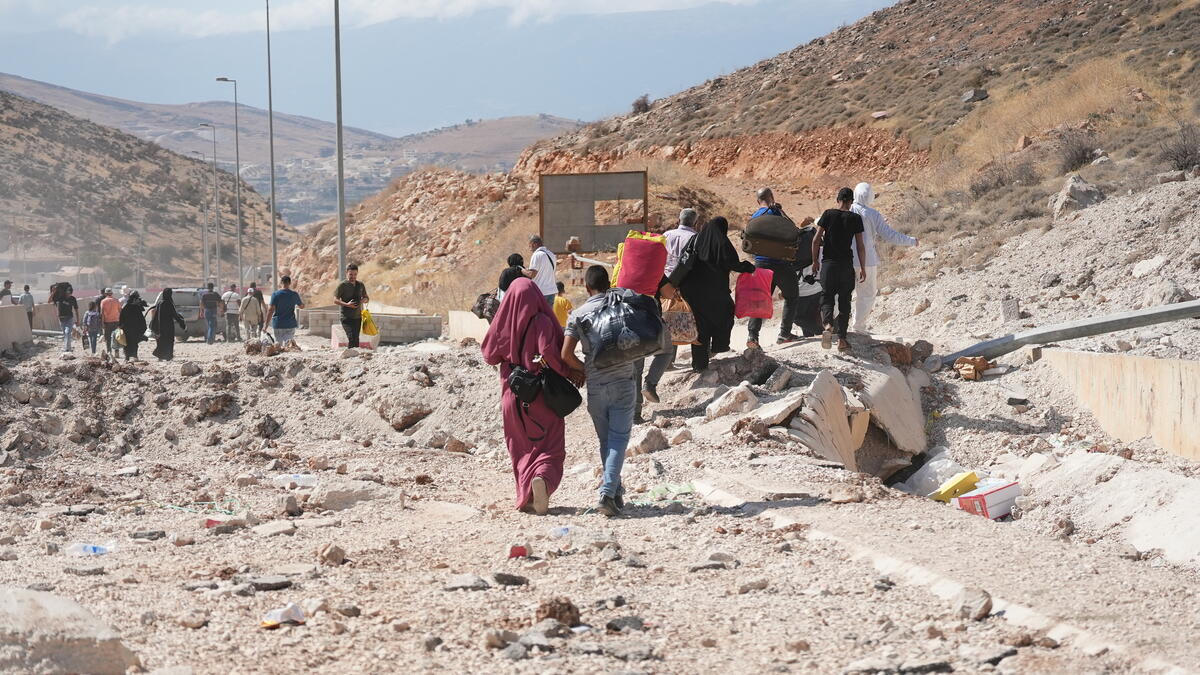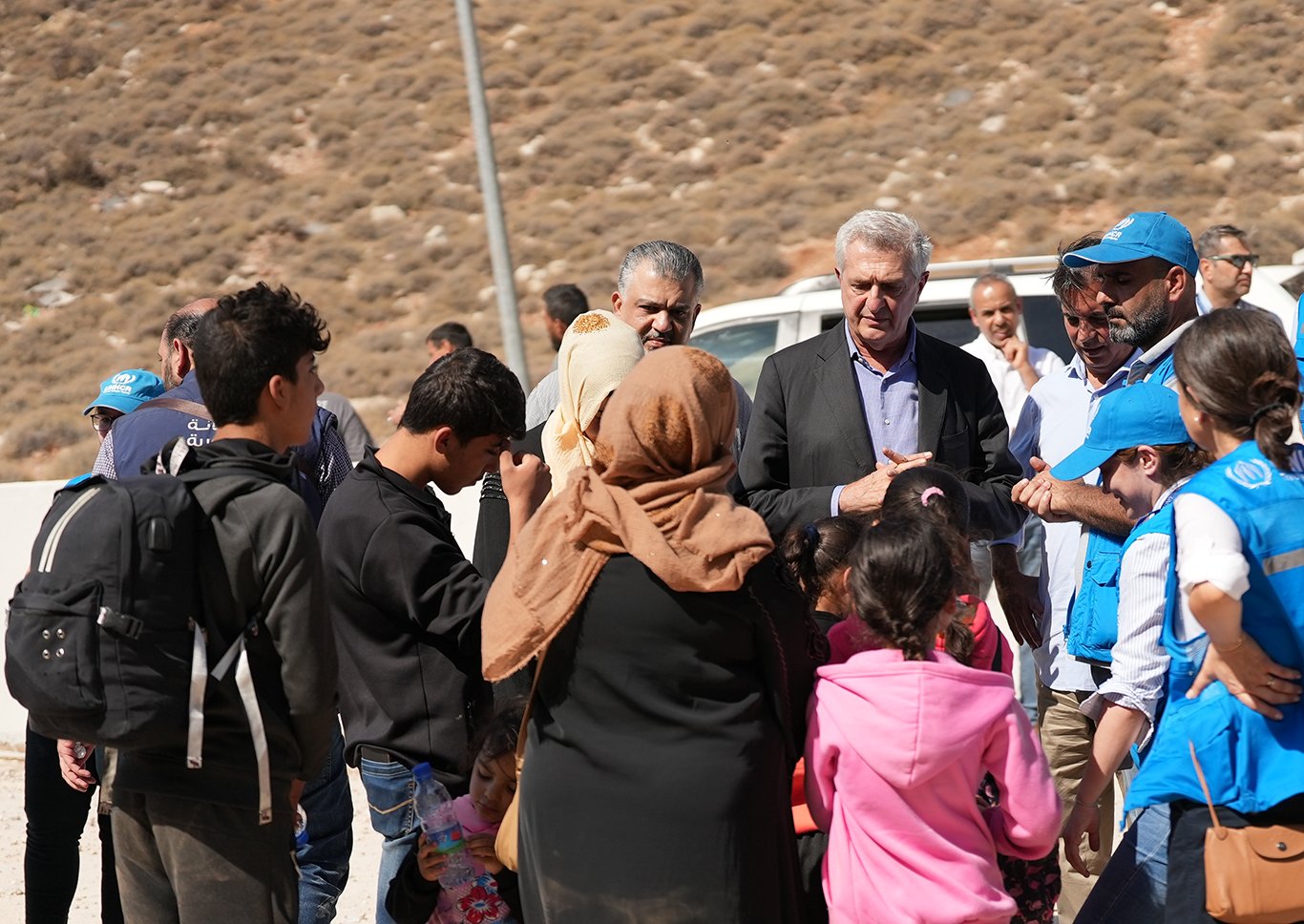The women and children turning to Europe

The women and children turning to Europe
Brushing raindrops off her tent, Nisrine Shiko, a 34-year-old Syrian refugee and widow travelling with her five children, tries her best to waterproof the family’s living space. For the past week they have been staying near Idomeni, a Greek village on the border with the former Yugoslav Republic of Macedonia.
At least 12,000 people are now caught here in miserable conditions, uncertain of their future.
Nisrine, her two sons and three daughters sleep in two tiny camping tents pitched side-by-side in a muddy field. Icy rain pitter-patters on the plastic overhead; nothing is ever dry.
Life at Idomeni is hard on everyone, but it is especially difficult for single mothers. “I am both mother and father at the same time,” says Nisrine, whose husband was killed in Syria three years ago. “God gives me strength to care for these children.”
The family is among the thousands of women and children making the journey to Europe alone, with little protection along the route.
For the first time since the start of Europe’s refugee crisis, they have overtaken single males as the majority of those on the move. Women and children now make up nearly 60 per cent of sea arrivals, according to UNHCR data, compared to less than 30 per cent in June 2015.
Many women, like Nisrine, are widows whose husbands died in the war or in earlier sea crossings. Others have husbands in Germany, Sweden or elsewhere in Europe. They say they are now coming to join them as legal options such as family reunification take too long – and as more European countries close their borders to refugees.
Safety is a major concern for such women and children, says Babar Baloch, a spokesperson with UNHCR, the UN Refugee Agency, who is now at Idomeni.
“They face exploitation at the hands of smugglers and traffickers at many stages during the journey,” Baloch says. “Or there are issues of sexual harassment or even abuse because they’re on their own. It’s difficult to survive if they don’t have support from others.”
UNHCR, along with its sister agency, UNICEF, and other partners, recently launched support centers for the growing numbers of refugee children and others with special needs. The Child and Family Protection Support Hubs, known as “Blue Dots,” provide services such as legal support and family tracing. A hub is operational at Idomeni.
During the trek to Idomeni, Nisrine’s family stuck with a group of Syrian Kurds for protection and support. Some have now pitched their tents near hers.
Still, their daily lives are harsh. Idomeni’s camp was built as a temporary transit place for 2,000 people maximum. Although UNHCR and other aid groups provide refugee housing units, most people sleep in flimsy individual tents. Heavy spring rains have flooded the camp. Small children march through muddy puddles, soaking the only clothes they have.
“I am both mother and father at the same time.”
Nisrine’s tent is a few hundred metres from the razor-wire fence built by the former Yugoslav Republic of Macedonia in November to control irregular migration flows.
Nisrine worries constantly that her children will join the chorus of coughing, stuffy-nosed people around them.
One morning this week, she sat on blanket looking after three-year-old Adib, her youngest, and four-year-old Sedra. Adib knocked his sister’s Barbie doll into the wet dirt, prompting a fit of tears.
“I’d rather die than see my children living in these conditions,” Nisrine says. “I can’t stand it.”
All that remains of their past life in Aleppo is a tan leather purse. Inside, Nisrine keeps a stack of photos wrapped in plastic to shield them from water damage.
“This is our wedding,” Nisrine says, holding a photo of her husband, Adib, standing beside her. She wears a white dress with a red sash around her waist, a Kurdish tradition. “It was the happiest day of my life.”
They were married for 16 years. The family lived in Aleppo city in a small house with a big courtyard. Adib drove a bulldozer at construction sites, while Nisrine cared for their children.
Two years after the war began, in summer 2013, a bomb hit their home as they slept. Nisrine, seven months pregnant, went into early labour when shrapnel hit her stomach. Thankfully, their son was born healthy.
A few months later, in September, a bomb killed her husband as he left to get food for the family. The last to see him alive was their oldest son, Mohammed.
“As he was dying, he told Mohammed to take care of me,” Nisrine says quietly, so the 15-year-old in the tent behind her does not hear.
“I’d rather die than see my children living in these conditions.”
Last month, she decided to flee to Europe. As a single mother who lived through five years of war, Nisrine had hoped to reach her parents and two sisters in Germany.
They paid smugglers €900 in total to take them from Turkey to the Greek island of Chios in a rubber boat crammed with 70 people.
“All I was thinking was, you can’t catch five kids if they fall in the water,” Nisrine says of the sea crossing. “Maybe one or two, but not five.”
They then took a ferry boat to the Greek mainland, to Athens’ port of Piraeus, and a bus northward toward Idomeni, hoping to pass the unofficial border crossing. But now, Nisrine says, they are out of money and unsure what will happen next.
About 37,000 refugees and migrants are now in Greece, according to Greek authorities, and hundreds still arrive on the Greek islands daily, sometimes more than 1,500.
Greek authorities are gradually bringing people from Idomeni to newly built, longer-term reception facilities throughout Greece. From there, they can pursue legal options, such as asylum in Greece or the European Union’s official relocation scheme, which seeks to relocate 160,000 refugees from Greece and Italy to other member states over the next two years.
Nisrine is not yet sure what she will do. With relocation, she cannot choose the country and she wants to join family members who may live elsewhere.
“Every day I cry,” Nisrine says. “I don’t know what is next.”


